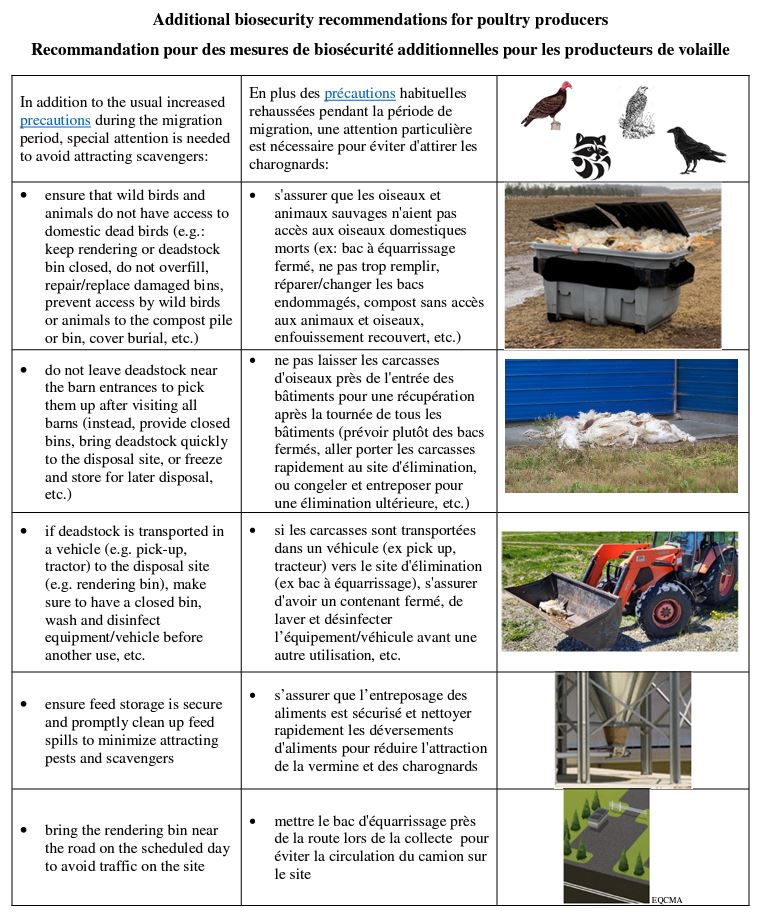


 Français
Français


Mortality management has always been a part of the On-Farm Food Safety Program requirements and the importance of these measures has been underscored with recent learnings from highly pathogenic avian influenza (HPAI) cases. CFIA has indicated that mortality management on some Infected Premises (IPs) has been a concern for the spread of HPAI to other barns and the surrounding environment.
Some key points to remember and reinforce with all farm staff:
The risk with improper mortality management is that it may attract wild birds to the farm, and those wild birds could potentially bring avian influenza with them. In some cases, domestic birds have contracted avian influenza with a mutation that is usually present in mammals that are infected, indicating the scavengers likely ate a mammal that had HPAI and then subsequently passed that on to the domestic flock. The more the virus mixes between birds and mammals, the more chances there are for new mutations to develop.
This is becoming a greater concern for CFIA and the Public Health Agency of Canada as infection and spread among wild mammals is an increasing concern for public health.


